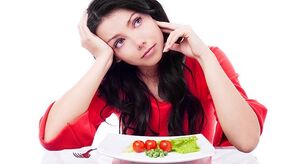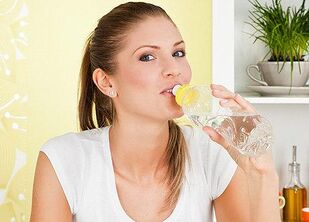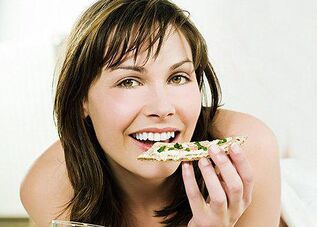Inflammation of the pancreas is one of the most serious diseases of the digestive system. To distinguish between acute and chronic inflammation of the pancreas, each has its own characteristics and treatment.

Inflammation of the pancreas is one of the most serious diseases of the digestive system. To distinguish between acute and chronic inflammation of the pancreas, each has its own characteristics and treatment.
But one thing is unchanged in pancreatitis: the old lifestyle and diet will remain in the past because the basis for treating pancreatitis is an almost lifelong diet. The pancreas does not forgive eating errors, it reacts immediately with pain and indigestion.
Basics of Pancreatitis
Inflammation of the pancreas develops due to acquired disease, abdominal trauma, viral damage to the pancreas due to rupture of the liver and gallbladder, after intoxication with alcohol and other toxic substances, with frequent and severe eating disorders - prolonged fasting, prolonged fasting, sitting.
The main signs of pancreatitis are:
- abdominal pain - sharp, dagger, almost unconscious in acute pancreatitis, or dull or painful in chronic form;
- nausea and vomiting;
- stool disorders, more often severe diarrhea, fever;
- drastic weight loss.
Acute pancreatitis is usually hospitalized. Exacerbation of a chronic condition can be treated at home, but only under medical supervision. In inflammation of the pancreas, self-healing is dangerous with the development of complications up to necrosis of the pancreas (enzymatic melting of the glandular tissue, self-digestion of the gland) and the development of peritonitis, which is fatal.
Nutritional Therapy for Pancreatitis
Medicinal, enzymatic and dietary therapy for pancreatitis is selected by a physician based on the patient's condition and test data. However, the general principles of dietary correction always remain approximately the same. They provide rest for the digestion and pancreas, which means they reduce pain and normalize well-being.
The diet for pancreatitis is severely limited - most standard products should be forgotten.Eat often, about 5-6 times a day - 2, every 5-3 hours, with an 8-hour sleep break. But the volume fractions should be small - about 200-250 g, especially after the disease has worsened for the first time.
All foods are mechanically processed - virtually all are used in pureed form. Then, when the inflammation subsides, larger particles appear in the food, but the food must be chewed thoroughly.
Because the whole body suffers from an insufficient supply of nutrients in pancreatitis,should increase the protein component of the diet (meat, fish, dairy products) - an average of 140-150 g of protein per day.
But fats and carbohydrates, which put a lot of strain on the pancreas, are kept to a minimum. They give about 300 g of carbohydrates a day, fat - up to 70-80 g.
Many products - meat and broth, cabbage juice and broth - are removed from the diet, for a period of severe analgesia, a therapeutic fasting is recommended for 1-2 days, under the supervision of a doctor.
In case of pancreatitis, drink more fluids -it is recommended to drink no more than 2 liters of clean water a day, about half an hour, to take 2-3 sips of water throughout the day.

Of course, in case of pancreatitis, you need to stop smoking and drinking alcohol completely. They are the strongest seizure provocateurs.
What should be excluded?
The list of forbidden foods becomes quite impressive and can be frustrating at first. However, without complying with these restrictions, relief is expected for a very long time. Gradually, you can carefully expand your diet, following the general principles of proper nutrition.
So for the entire acute period or the moment the chronic process worsens, you should rule out:
- beetroot soup, cabbage soup and beetroot, okroshka, broths, mushroom and fish soups, broths themselves;
- fatty meat - pork, lamb, goose and duck;
- intestines - kidney, heart, brain, liver;
- fried, smoked, salty and spicy foods;
- canned food;
- sausage;
- fatty fish (catfish, starfish shell, carp); caviar;
- lard, margarine, mayonnaise;
- fatty dairy foods - cream, sour cream, coumiss; yolk, boiled egg;
- millet, corn, barley, legumes garnishes;
- cabbage, turnips, radishes, radishes, scrambled eggs, eggplant, onions and garlic, sorrel, cucumbers, tomatoes and peppers;
- citrus fruits, apples (sour varieties), grapes, pomegranates, blueberries;
- chocolate, canned;
- spicy potatoes, sauces, marinades, vinegar, ketchup;
- all carbonated drinks, even mineral water (can only be without gas);
- strong tea and coffee, juices, cocoa;
- all fresh baked goods and cakes, pancakes, pies, shortbread.
As you can see, the list of restrictions is quite large, but this is only for the duration of the acute process. You can then gradually expand your diet gradually, but annoying and “heavy” foods should be forgotten almost forever.
What can you eat?
This is the first question that arises after reading the blacklist. The diet, of course, is not very diverse, but it aims to keep the pancreas calm and relieve inflammation.

Enabled:
- yesterday's dried bread with croutons;
- vegetable and pasta soup;
- steamed meat dishes and poultry slices, meatballs, rolls, pasta, meat puree;
- cooked fish fillet (lean), fried fish, omelette;
- milk, cottage cheese, low-fat and light cheese, kefir;
- vegetable and butter (porridge) oils;
- vegetable purees and stews, cooked vegetables;
- pasta, pasta made from cereals - oatmeal, semolina, buckwheat, rice;
- unsweetened fried fruits (pears, apples, peaches, plums);
- compote, jelly, jelly;
- rosehip decoctions, herbal teas, bran drink.
Of course, your diet is limited, but you will gradually expand your menu in consultation with your doctor.
Sample menu
It is worth noting that this menu can already be used at home when exacerbation is relieved, fasting and gradual food intake are prescribed in the acute stage of pancreatitis. When preparing your diet, keep in mind that you should have at least five meals that are approximately equal to your calorie content and digestive load.
Menu for 5 days of pancreatitis
First Day
- Breakfast: mashed potatoes - 100-150 g, 2 croutons of white bread, 200 ml of mineral water (without gas! ).
- Second breakfast: steamed chicken slices - 100 g, omelette - 100 g, dried white bread - 1 slice, 200 ml milk (kefir).
- Lunch: vegetable soup - 200 ml, boiled fish - 100 g, zucchini puree - 100 g, white bread - 1 slice, rosehip broth - 200 ml, a third of a banana.
- Afternoon snack: fruit jelly - 100 g, fat-free cottage cheese - 100 g, carbonated mineral water - 200 ml.
- Dinner: oatmeal -200 g, pumpkin puree - 100 g, steamed meatballs - 2 pieces, weak tea with milk, a slice of dark bread.
Day Two
- Breakfast: buckwheat porridge -200 g, 2 croutons of white bread, 200 ml of tea with milk.
- Second breakfast: steamed beef slices - 100 g, carrot juice - 200 g, dried white bread - 1 slice, 200 ml of dried fruit compote.
- Lunch: pasta soup - 200 ml, boiled chicken - 100 g, vegetable puree - 100 g, white bread - 1 slice, mineral water - 200 ml, half fried pear.
- Afternoon snack: apple sauce - 200 g, carbonated mineral water - 200 ml, Maria biscuits - 100 g.
- Dinner: mashed potatoes -200 g, low-fat cottage cheese - 100 g, sandwich with cheese (30 g cheese, a piece of toasted bread), weak tea with milk, a slice of dark bread.
Third Day
- Breakfast: pumpkin and pumpkin puree - 100-150 g, 2 croutons of white bread, 200 ml of mineral water (without gas! ).
- Second breakfast: low-fat cottage cheese - 100 g, half-baked pears, white dried bread - 1 slice, 200 ml of compote.
- Lunch: broccoli soup - 200 ml, boiled meat, mashed potatoes - 100 g, mashed potatoes - 100 g, white bread - 1 slice, chamomile tea - 200 ml.
- Afternoon snack: vegetable stew - 200 g, cheese - 50 g, carbonated mineral water - 200 ml.
- Dinner: buckwheat porridge -200 g, kefir - 200 g, half a banana, a slice of white bread.
Fourth Day
- Breakfast: mashed potatoes - 100-150 g, 2 croutons of white bread, 200 ml of mineral water (without gas! ).
- Second breakfast: rice - 200 g, white toast - 1 slice, 200 ml milk (kefir).
- Lunch: vegetable soup - 200 ml, boiled fish - 100 g, carrot puree - 100 g, white bread - 1 slice, rosehip broth - 200 ml, a third of a banana.
- Afternoon snack: omelette - 100 g, baked sweet apple, carbonated mineral water - 200 ml.
- Dinner: oatmeal -200 g, pumpkin puree - 100 g, steamed meatballs - 2 pieces, weak tea with milk, a slice of dark bread.
Five Days
- Breakfast: oatmeal -200 g, pumpkin puree - 100 g, steamed meatballs - 2 pieces, weak tea with milk, a slice of dark bread.
- Second breakfast: steamed chicken slices - 100 g, omelette - 100 g, dried white bread - 1 slice, 200 ml milk (kefir).
- Lunch: pasta soup - 200 ml, steamed fish slices - 100 g, pumpkin puree with carrots - 100 g, white bread - 1 piece, rosehip broth - 200 ml, Maria biscuits - 2 pcs.
- Afternoon snack: fried fruit - 100 g, fat-free cottage cheese - 100 g, carbonated mineral water - 200 ml.
- Dinner: mashed potatoes - 100-150 g, 2 croutons of white bread, 200 ml of mineral water (still! ).
Relief can be achieved quickly by following your doctor’s advice, strict adherence to your diet, and following all prescriptions. But a fairly strict diet with "heavy" foods is limited to 3-6 months. And you should constantly limit your fatty, fried, spices and canned foods.




















